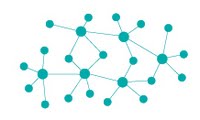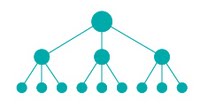How Decentralization re-invented the Music Industry
How Decentralization re-invented the Music Industry
Derived from...
Ori Brafman & Rod A. Beckstrom; The Starfish and the Spider
Previously
Examples of Centralized and Decentralized Organizations
RAP3: The Music Industry Pendulum

The story of the music business shows how industries swing from decentralized to centralized and back again.
It’s a useful reminder for your industry and the context of ‘The Starfish Era’ in which we are living.

Prior to recorded music, travelling performers operated independently as they sang their way across the country.
Then Edison’s invention of the gramophone changed all that - he allowed you to take music home with you and as a result numerous independent record companies emerged to tap into the demand for sound and new found profit.

The pendulum soon swung away from the independent musicians to be taken over by the recording companies who were able to create a star simply by publishing their records and scoring radio airplay.
By the end of the 20th Century, 80% of the global record industry was dominated by just five companies.
To get anywhere in the music business you needed a recording contract and for this you needed to join one of these major players.
Centralized power was held in the hands of the few.
Then, as quickly as the gramophone and radio had created the music industry, the internet provided the means to dismantle it.The internet was decentralized power in the hands of the many, and it naturally decentralized the music industry one swapped song at a time.
The shift started in Shawn Fanning’s college dorm room.

He created a simple piece of software that allowed users to swap files.
It seemed innocent enough and yet this birth of Peer to Peer software started a revolution.
Fanning’s software became the infamous ‘Napster’ and it’s effect on the music industry was devastating.
Over a five year period from 2001 to 2005, revenue from the major music industry players had fallen by 25%.
CD sales were spiralling downwards.
Sales weren’t being transferred to any new players, Napster wasn’t making the money.
Sales were simply disappearing.
As with any change toward a decentralized structure, profits will decrease - perhaps that’s why we hear so little about decentralized organizations in our business schools?At first, the music industry didn’t know what to do.
Their sales were dropping but they couldn’t figure out why.
They couldn’t spot their new enemy.
It wasn’t like another giant corporation had muscled into their turf.
No, it was a bunch of kids swapping their music over the internet.
The music industry did the only thing they knew to do, they went to court to put Napster out of business.
In the past this would have worked, but they were up against a phenomenon that was operating out of a different paradigm.
Eventually, they had Napster closed down but all that did was force new, even more decentralized organizations to pop up.
Napster was a relatively easy target because they could shut their servers down.
But along came Kazaa, then Kazaa Lite, then eMule which was open source peer to peer software - no one owned it, no one person created it and it didn’t live in a specific location.
The music industry has now adopted a new path.
They know they cannot beat the music pirates.
Even more so, they know that the Achilles heel of a centralized organization is a decentralized one and that is precisely the point of this book.
Action: Where is your Industry at?
- Is your industry heading toward centralization or decentralization?
- What are the threats and opportunities on the horizon to swing the pendulum the other way?
Labels: Business Design, Business Models, Centralize, Decentralization, Fusion, Music Industry, Organizational Structure, Ori Brafman, Rod Beckstrom, Spider and the Starfish


0 Comments:
Post a Comment
<< Home